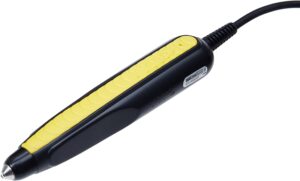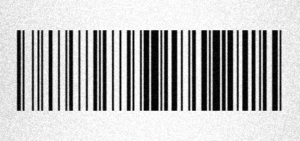It is decisive to know how barcode scanners work, and their purpose in Inventory Management as barcode scanners play a vital role. Barcode scanners or barcode readers are hand-held electronic devices that read machine-readable data codes and serve a broad range of organizational and financial purposes. It is essential to know how do barcode scanners work as they pertain to data information about the products.

What is Barcode Scanner?
Barcodes are merely data codes and there occurs a common question among the consumers – “what do barcode scanners read? Barcodes are essential data information holders of products, and it is vital to know how do barcode scanners work.
Here are the main factors which are essential while you choose a barcode scanner for your business:
- Scan Engine Type
- The Types of Barcode Scanners to Read
- The operation of your company/size of your business
Types of Barcode Scanners
There are four main types of barcode scanners. These devices are practical to use in Inventory Management. It is essential to how many barcode scanners are there and how do barcode scanners work in general.
Pen-type/Wand-type Readers
This type of scanner is a LED light device and there’s a photodiode on its tip. The cost of pen-type barcode scanners is not too expensive in the marketplace as well. In order to read a barcode, you should pass an item at a relatively low speed to read the printed barcodes.
The pen-type barcode scanners looking like small pens are designed to perform a quick scanning job, including scanning images on packages. The photodiode’s purpose is to measure the light’s reflection and identify the bars’ width and colour. This process allows reading the bar codes’ digital reading and transmitting it to another unit to continue the processing.
Laser Barcode Scanners
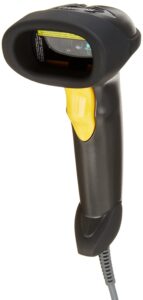
This type of barcode scanners also looks like pen type reader and uses laser beams to read the information. This type of barcode is relevant to read barcodes from a 15cms to 60 cms distance. Laser barcode scanners are popular devices in the world of retail. There are even types of laser barcode readers that can read the information from half a metre to 3 metres distances.
There are many benefits of using laser barcode scanners for your inventory management despite the popular opinion that they are of old technology. There’s no need for an image processor while you use laser barcode scanners, plus they are quick to use capable of scanning 1300 scans per second.
CCD (Charge Coupled Device) Barcode Scanners

CCD barcode scanners are also famous as linear image barcode scanners/readers apply a charge-coupled device technology. The charge-coupled device technology assumes the use of light sensors measuring ambient lights that the barcodes emit. The CCD technological barcodes are applicable, especially for harsh working conditions. The CCD scanners capture sunlight and convert it into digital data, recorded through the camera.
The CCD scanners to work need to be from 3cms to 10 cms away from the barcode. Otherwise, it will not function. The CCDs won’t read any barcodes longer than the scanner monitor distances.
Imager Barcode Scanners/Camera-Based Scanners
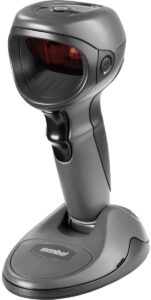
Image scanners also know as camera-based scanners have video cameras inside the devices. The Image scanners function more like digital cameras other than laser cameras ready to read two-dimensional data symbologies. These type of cameras can read barcodes no matter the distance or the position against the scanners. These scanners are sophisticated devices making the transactions much faster.
Unlike the lasers, the image scanners do not require barcodes to change the orientation in any specific position to read them, which means the scanning becomes much faster and easier. There are certain types of image scanners that capture the actual photo images of barcodes as well.
How do Barcode Scanners Work?
Barcodes are codes comprising essential data and information about a particular product. Barcodes scanners read the black-and-white zebra lines on the products later transferring them to the computers or the checkout terminals.
Many business owners ask the question “How do barcode scanners work?” Here’s what the procedure looks like:
- The scanner captures LED or laser lights onto barcodes.
- Light reflects off barcodes and transforms it into a light detecting component, named photoelectric cells.
- The electronic circuit close to the scanner converts the on-off pulses into zeros and ones- binary digits.
Types of Barcodes: Difference Between 1d and 2d Barcode Scanners
There are two main types of barcode scanners: 1-dimensional (1D) and 2-dimensional (2D). It is essential to know the difference between 1d and 2d barcode scanners.
1-Dimensional (1D) barcodes
1-dimensional (1D) barcodes encode series of black and white bars storing information about the product type, size & colour. The 1-dimensional (1D) or the linear barcodes are easy to find, and they are usually on the top of universal product codes (UPCs) of the product packagings. The Delivery services like USPS and FedEx efficiently deliver packages due to the 1D barcodes. The data for 1-Dimensional (1D) barcodes encodes the information using variable-width lines and spaces, usually including a limited number of characters varying from 20-25.
2-Dimensional (2D) barcodes
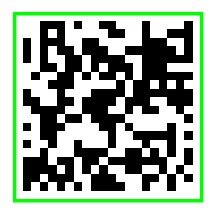
2D barcodes are a bot more complicated than 1D barcodes as they include more data information. There is a need to understand the difference between the 1d and 2d barcode scanners. 1d barcodes provide data about the product type, size and colour. The 2d barcodes also encrypt images, website addresses, and other binary data, which assumes that the codes can function independently of a database. The 2D barcodes practice patterns shapes and dots to encode the information both horizontally and vertically. The next significant difference between the 1d and 2d barcode scanners is that the 2D barcodes include QR code, PDF417, and Data Matrix types.
Imagine owning a large company and dealing with a large sales inventory, the need for the right barcode scanners becomes a “Must Have”.
eSwap as an Inventory management software allows you to manage your inventory via barcode scanning. You will be able to do the businesses more efficiently than manual encoding full of human error occurrence running accurate inventory management. eSwap helps to increase your order fulfilment procedure at the same time helping to increase your productivity and reducing costs in the warehouses. Order picking becomes easy and seamless with eSwap.
